
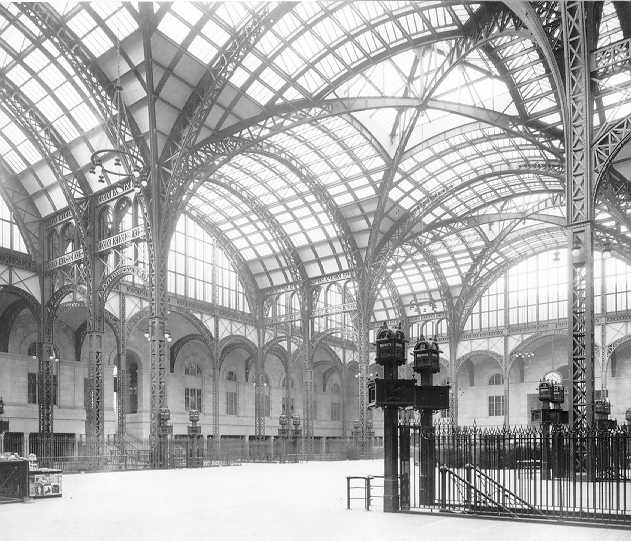
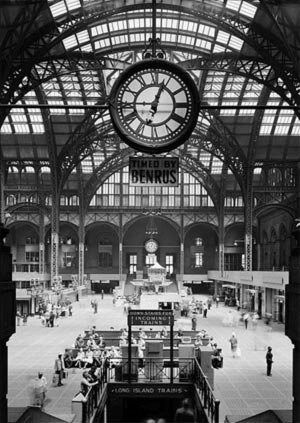


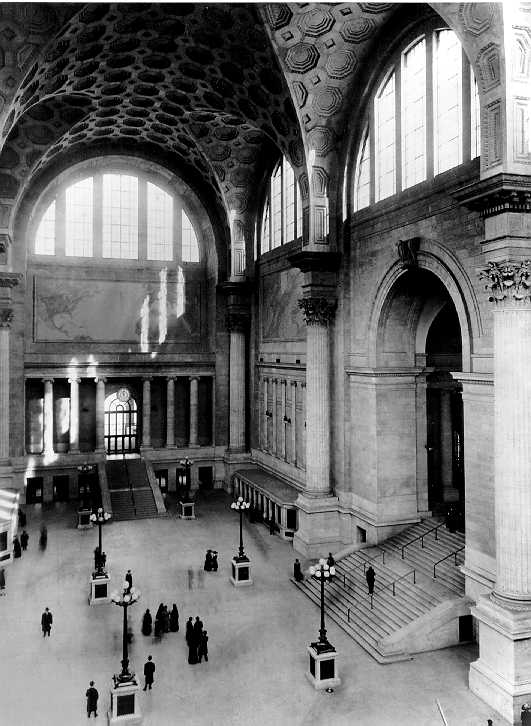

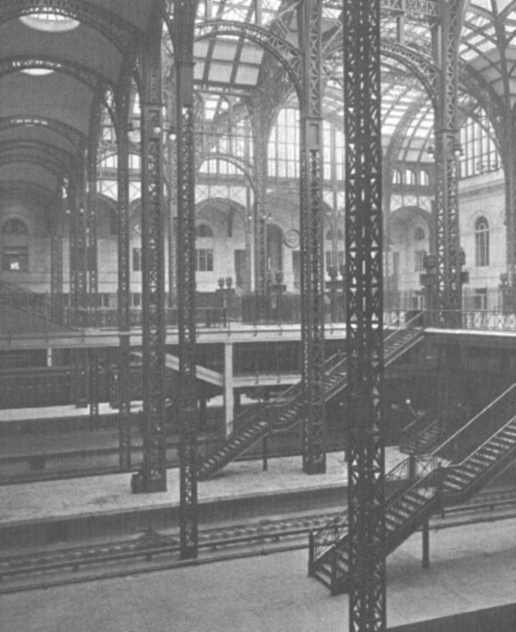
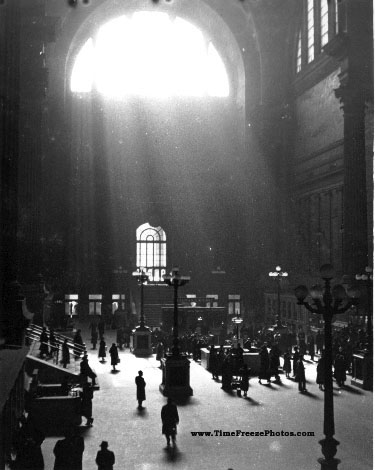
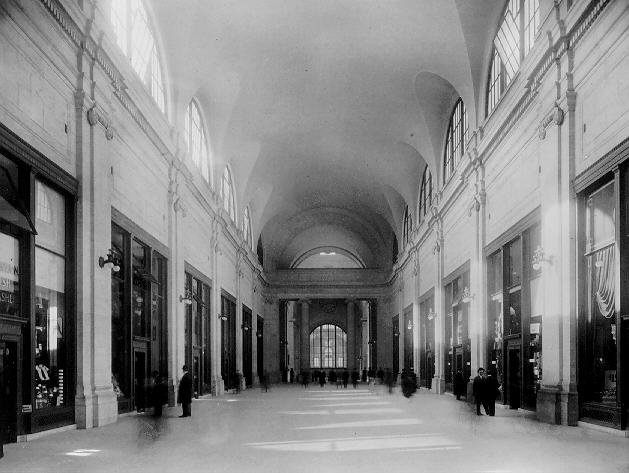
Perhaps the greatest threat to noted historic buildings are the politics and economics of the moment. Here in New York City this is best exemplified by the destruction of the original Pennsylvania Station. This wondrous, grandiose structure designed by McKim, Mead and White, was built in 1910, only to be torn down a half century later to make way for Madison Square Garden. Im a Knicks fan and it may be the worlds most famous arena, but its far from the worlds finest arena. To add insult to injury this prime piece of New York real estate is property tax free while owner James Dolan and company have mastered the fine art of throwing money away.
A New York Times editorial from October 30, 1963 noted, Any city gets what it admires, will pay for, and, ultimately, deserves. Even when we had Penn Station, we couldnt afford to keep it clean. We want and deserve tin-can architecture in a tinhorn culture.
And we will probably be judged not by the monuments we build but by those we have destroyed.Instead we were given a rat maze in replacement and a terrific space that had other potential applications, conference and exhibition center for example, was lost. Ironically, the daily traffic of the underground Penn Station replacement has become so great that an extension into the massive Farley Post Office opposite the Garden has been proposed. An extension designed by architecture firm Skidmore, Owings and Merrill that I helped visualize in 2001 at KDLAB, (SOM Journal 1, pages 36/37). The Farley Post Office, also designed by McKim, Mead and White, will be the last example of their work in the area as the 1918 Pennsylvania Hotel is also slated for demolition. One beneficial outcome of this incident, it resulted in the New York City Landmarks Preservation Commission, spurring historical preservation throughout the United States.
Unfortunately this remains a common worldwide issue.
Well, primarily in the US___________________________________________________________________________________________________________________________________-
THIS was the train station that connected NYC to the rest of the world. Before its completion, passengers had to take a boat to NYC after getting off trains in NJ. Part of the construction of Penn Station included the tunnels to NJ..so passengers could come directly into NYC.
Its destruction was a ghastly economic based decision. The destruction of Penn Station is what motivated the creation of the Landmark Preservation Commission in NYC. Too little, too late for one of the most grandly conceived and magnificently created structures that ever graced NYC. It was inspired by the Baths of Caracalla in Ancient Rome.
If you are interested, check out "THE LATE GREAT PENNSYLVANIA STATION"
http://www.amazon.com/Late-Great-Pennsylvania-Station/dp/1568580606/ref=pd_sim_b_3-
The author of this book used to give tours of what is left of Penn Station showing where there were still some remnants of its former greatness hidden in the dreck that is now Penn Stationor
"Conquering Gotham: Building Penn Station and Its Tunnels"
http://www.amazon.com/Conquering-Gotham-Building-Station-Tunnels/dp/0143113240/ref=cm_cr_pr_product_top
From Publishers Weekly
Modern Manhattan is a miracle in many ways, but all of its imports, commuters included, must traverse at least one river to get there. In 1900, the New York Central, owned by the Vanderbilts, already gave Manhattan a northern connection over the narrow Harlem River. A southern connection over the mile-wide Hudson would be a whole different story. Alexander Cassatt, president of the Pennsylvania Railroad, was the visionary on the project. But how to do it? A bridge plan fell through due to expense; a tunnel would lack the oxygen needed for steam engines. The breakthrough lay in the cutting-edge electrified locomotives developed in Paris. Historian Jonnes (Empires of Light), demonstrating impressive immersion in the Gilded Age, ably spins the tale, which bears some similarities to The Devil in the White City. This is a vivid story of hardball Tammany Hall maneuvering and mind-boggling engineering. Once construction began, the two-track narrative settles on the daunting construction of the tunnels and Charles McKim's much-admired design of the terminus at Pennsylvania Station, prized by New Yorkers only after its ill-considered demise in 1963. Jonnes can claim an important addition to the popular literature of how New York became the archetype of a great American metropolis. (Apr. 23)
Copyright © Reed Business Information, a division of Reed Elsevier Inc. All rights reserved. --This text refers to an out of print or unavailable edition of this title.
From Booklist
Commemorated in many a rueful history book after "barbarians" demolished it in the 1960s, New York City's Pennsylvania Station was the visible manifestation of a titanic subterranean project. Its sweeping story, involving engineering challenges, an inflexibly honest corporation leader, flexibly corrupt politicians, and street-level sociology, comes together marvelously in Jonnes' admiring history of the undertaking. It arose from the Pennsylvania Railroad's determination to run its trains directly into Manhattan; in the 1890s, Penn passengers had to alight in New Jersey and board ferries, a scene Jonnes evokes with an excerpt of Penn president Alexander Cassatt's experience of the inconvenience. The main impetus to the enterprise, Cassatt, operating in an era of lightly regulated capitalism, wielded substantial power, and his decisions structure Jonnes' narrative. Cassatt's siting of the station in the city's notorious den of iniquity, the Tenderloin, introduces the outstretched palms of Tammany Hall, while his taste for the classical aesthetic introduces Charles McKim's design of the station. Equally interesting on the technical hazards of the tunnel work, Jonnes has produced an exemplary construction epic. Gilbert Taylor
Copyright © American Library Association. All rights reserved --This text refers to an out of print or unavailable edition of this title.
The Destruction of Penn Station
http://www.amazon.com/Destruction-Penn-Station-Barbara-Moore/dp/1891024051/ref=pd_sim_b_4
Review
...grand cathedral-like Pennsylvania Railroad Station was torn down
Moore documented that sad, historically controversial process on large-format black-and-white film. -- Popular Photography, May 2001 --M.R.
Curiously, his most bracing images record the early stages of destruction, when commuters were moving through unfazed
-- The New Yorker, April 9, 2001
The sequence and editing of photos
gives you a strong sense of something almost alive that is slowly dying. -- Paris Photo, Summer 2001 --R.S.
guaranteed to shock those whove only known the stations undistinguished replacement. Peter Moores light-filled paeans to preservation
-- New York Magazine, April 9, 2001
the loss of the old station was a factor is the creation of the Landmarks Preservation Commission in 1965. -- The New York Times, May 20, 2001
ultimately, by allowing contemporary viewers to experience freshly that slow-motion tragedy, they illustrate why New Yorkers sense of loss endures... -- The New York Times Book Review, March 25, 2001 --David W. Dunlap
Product Description
Opened to the public in 1910, McKim, Mead & White's Pennsylvania Station featured a dramatic vaulted glass ceiling over its expansive main concourse and was inspired in part by the Roman Baths of Caracalla, giving visitor and commuter alike an experience of grandeur in entering and leaving the city. The decision in 1962 to replace the old station and its subsequent demolition ultimately proved to be key moments in the birth of the historical preservation movement--a movement that came too late to save Penn Station itself. But during this period one might on any given day of the week, have seen Peter Moore in the station, carefully photographing the building and the process of its destruction, even as above his head--and above the heads of the 200, 000 commuters who transversed the station each day--cranes were beginning to take down what had been one of the grandest public buildings of the 20th century. Moore visited the Station again and again between 1962 and 1966 to document its architectural form as well as the drama of its ''unbuilding.'' The resulting photographs combine compositionally elegant images of architectural form and details with haunting pictures of glass and masonry stripped away from steel girders as the building is progressively demolished.
"Moore's images are permeated with a sense of time and loss. There is a rhythm and flow to them as they unfold, from the arrested, classical quality of the still-intact station to the crescendo of the Dresden-like ruins."--Eric Nash
Clothbound hardcover, 10 x 11 inches, 128 pages, 1 color and 140 duotone illustrations.
and
http://www.nyc-architecture.com/GON/GON004.htmhttp://www.nyc-architecture.com/SPEC/GAL-PENN.htmhttp://www.nypost.com/p/classroom_extra/item_Ol0RomHVBbsgTkFyj5DrfL;jsessionid=8EF25DFFE52BC005A931F1A431172132